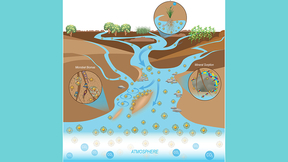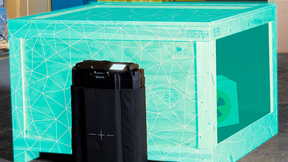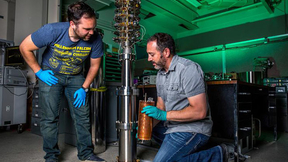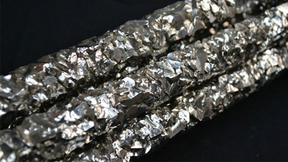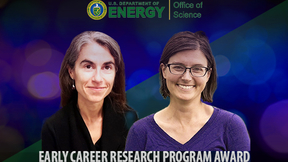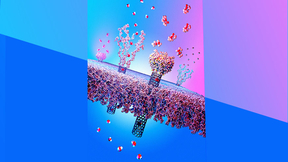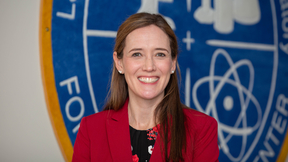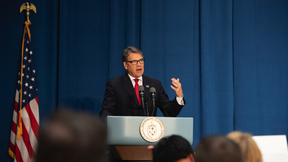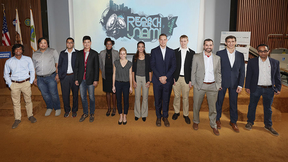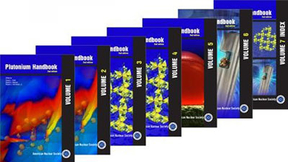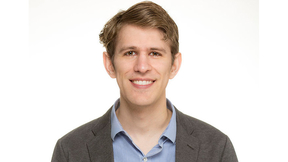Back
Like water molecules in a river, soil carbon atoms are always in motion. To better understand this action, Lawrence Livermore National Laboratory (LLNL) scientists and collaborators have created a new conceptual framework as well as a simulation model that traces the path of individual carbon atoms as they interact with the environment -- undergoing biochemical…
Identifying the areas where paleowater or “fossil water” — water that recharged before the Holocene started 12,000 years ago — is pumped for drinking water supply helps managers decide whether groundwater can sustainably meet future demands. This type of groundwater recharged during rainy periods under cooler and wetter conditions that ended about 10,000 years ago. Since…
In another month-and-a-half, a score of chemists from Lawrence Livermore National Laboratory's Forensic Science Center (FSC) will start two weeks of long days to undertake the Organization for the Prohibition of Chemical Weapons (OPCW) environmental proficiency test. Livermore chemists have been taking the proficiency tests each October since 2001, with LLNL serving as one…
In addition to maintaining its Organization for the Prohibition of Chemical Weapons (OPCW) laboratory designation for analyzing suspect environmental samples, LLNL also is an OPCW-designated laboratory for the analysis of biomedical samples. (See "Lab earns 'A' in OPCW test) In this instance, OPCW inspectors have the ability to collect biomedical samples for cases of…
Livermore physicist Sean Walston is a co-developer for the MC-15 portable neutron multiplicity detector.
Lawrence Livermore researchers and collaborators are searching for the axion—a low-mass particle that could make up the majority of dark matter.
Livermore scientists, in collaboration with university partners, are studying ways to harvest rare isotopes, including a radioactive isotope of the element zirconium.
Lawrence Livermore National Laboratory (LLNL) researchers, in collaboration with Pennsylvania State University (PSU) and Idaho National Laboratory (INL), have designed a new process, based on a naturally occurring protein, that could extract and purify rare earth elements (REE) from low-grade sources. It could offer a new avenue toward a more diversified and sustainable…
Two scientists from Lawrence Livermore National Laboratory (LLNL) are recipients of the Department of Energy’s (DOE) Office of Science Early Career Research Program award. Federica Coppari and Erin Nuccio are among 76 scientists nationwide selected for the recognition. Under the program, typical awards for DOE national laboratory staff are $500,000 per year for five years…
Recent events such as the COVID-19 pandemic and the use of chemical weapons in the Syria conflict have provided a stark reminder of the plethora of chemical and biological threats that soldiers, medical personnel and first responders face during routine and emergency operations. Personnel safety relies on protective equipment which, unfortunately, still leaves much to be…
The predictive models that describe the fate and transport of radioactive materials in the atmosphere following a nuclear incident (explosion or reactor accident) assume that uranium-bearing particulates would attain chemical equilibrium during vapor condensation. In a new study, funded by the Office of Defense Nuclear Nonproliferation Research and Development (DNN R&D…
A tiny, invisible particle could offer help for a big problem — the threat of nuclear proliferation. For more than six decades, scientists have been developing instruments for fundamental physics that can detect antineutrinos, particles that have no electric charge, almost no mass and easily pass through matter. Antineutrinos are emitted in vast quantities by nuclear…
A chemist who is the director of Lawrence Livermore National Laboratory’s (LLNL) Forensic Science Center is the recipient of the 2020 “Outstanding Early Career Achievement in Forensic Science Award.” The award, given to LLNL’s Audrey Williams, is presented annually by the American Academy of Forensic Sciences (AAFS) Past Presidents Council. This year’s award will be…
Former Secretary of Energy Rick Perry recognized Lawrence Livermore National Laboratory (LLNL) staff with six Secretary’s Honor Awards at a ceremony at Department of Energy (DOE) headquarters. The Secretary’s Honor Awards are bestowed on teams that have achieved a singular accomplishment that demonstrates a high level of performance and dedication to public service. As his…
On October 29, 2019, twelve Lawrence Livermore postdocs took to the stage, each with three slides and three minutes to answer the question: “Why is your research important?” The presentations, part of a yearly competition known as the Research Slam!, were a culmination of months of development, training, and practice. The 2019 program kicked off with seminars about…
The migration of low levels of plutonium has been observed at the Nevada National Security Site (NNSS) and attributed to colloid-facilitated transport. (A colloid is a mixture in which one substance of microscopically dispersed particles is suspended throughout another substance.) To understand why plutonium is migrating, LLNL scientists performed experiments using mineral…
This fall, the American Nuclear Society is publishing the second edition of the Plutonium Handbook, a 4000-page, 7-volume compendium that delivers a comprehensive review of plutonium chemistry. (The first edition was published 50 years ago.) Five years in the making, this publication includes contributions from 17 Lawrence Livermore researchers, two of whom are also on the…
Approximately 1000 students came to the Laboratory this summer to engage in work-study employment in science, technology, engineering, mathematics, and administrative fields. PLS hosted a number of these students through its summer student programs (described below). Nuclear science and security The Glenn T. Seaborg Institute hosted 12 students this summer, including 8…
Human hair is invaluable to forensic investigations because it is one of the few biological specimen types that persist for long periods of time. However, hair contains minimal intact nuclear DNA, leading researchers to search for alternate identification methods using hair. Previous research led to a new protein-based identification technique, providing a way to identify…
Jason Brodsky says his work is like “looking for a candle in a raging inferno.” But the Lawrence Livermore physicist believes finding that “candle” could be the key to understanding existence itself. Brodsky’s specialty is rare-event detection, both during his Princeton graduate work on dark matter and his current postdoctoral research at LLNL, in which he searches for…

